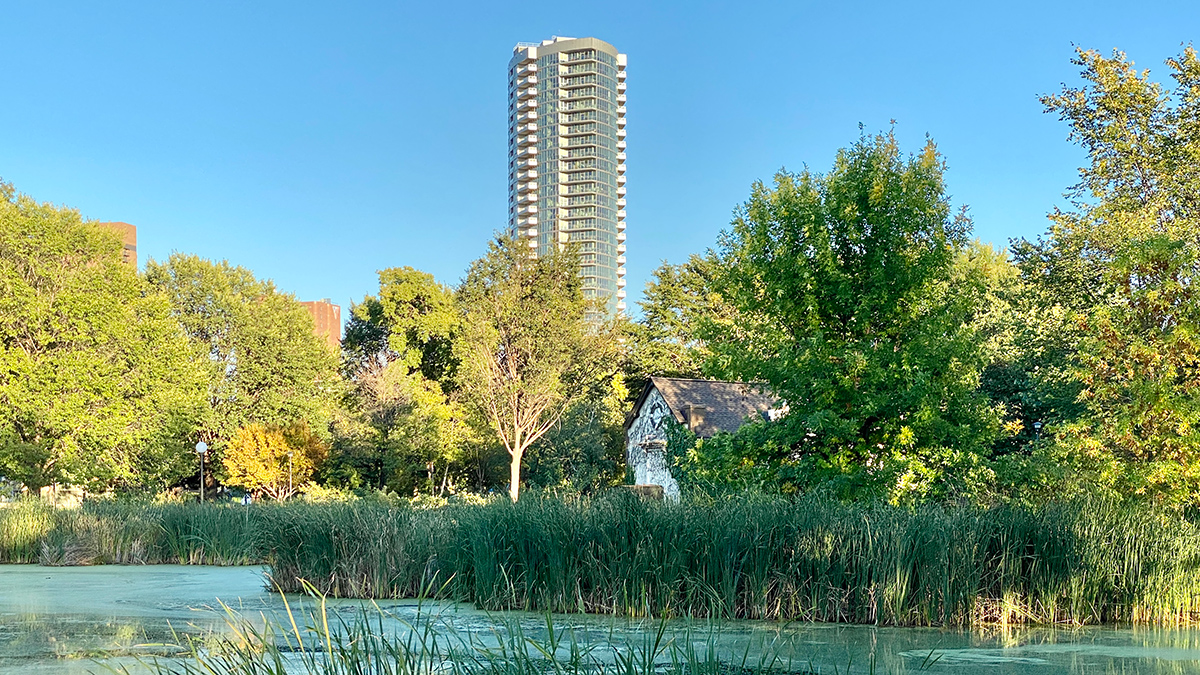Source: AGU Advances
Because trees can cool cities by providing shade and evaporating water into the atmosphere, greening city streets is an often-touted strategy for climate change adaptation. But trees provide benefits only if they’re healthy, and physical variations in urban environments mean that not all trees have the same chance to thrive.
Wilkening and Feng identified cityscape features in Minneapolis–Saint Paul that set trees up for success and that may cause them to struggle. The researchers used data from the ECOSTRESS sensor aboard the International Space Station to map the summer afternoon canopy temperatures. Then they applied machine learning to assess the relationship between these temperatures and various environmental factors, including proximity to water, urbanization, traffic exposure, and surrounding land cover. They found that proximity to blue and green spaces (areas with water or vegetation) improved tree health, whereas trees in areas with a lot of built structures and impervious surfaces fared worse.
Using this analysis, the researchers created and calculated the combined urban tree index (CUTI)—a metric that considers the fraction of land covered by tree canopy along with the temperature and health of the canopy—to determine how much an area benefits from its trees. The CUTI scale ranges from 0 to 1, with 0 meaning no benefit and 1 meaning maximum benefit.
In urban areas where the surroundings will likely cause trees to do poorly, city managers will need to plant more trees and attend to them more carefully than in areas where trees thrive naturally, the authors concluded. That approach may be particularly relevant to historically disadvantaged communities, which often have few trees. Planting trees in these areas is a step toward correcting environmental injustices, the authors say, but those trees must also be nurtured for communities to benefit from them. (AGU Advances, https://doi.org/10.1029/2024AV001438, 2025)
—Saima May Sidik (@saimamay.bsky.social), Science Writer


